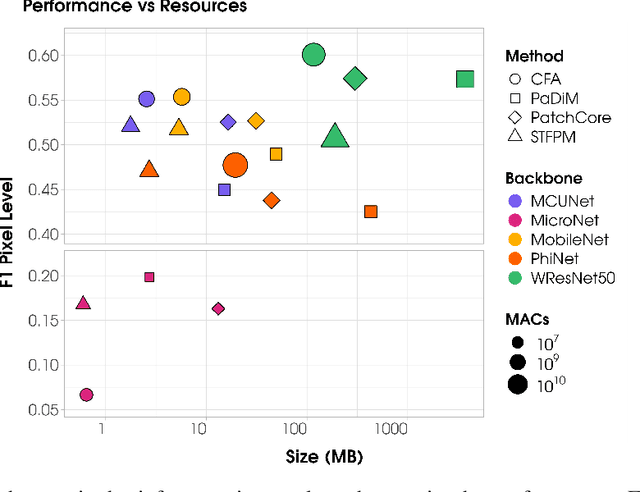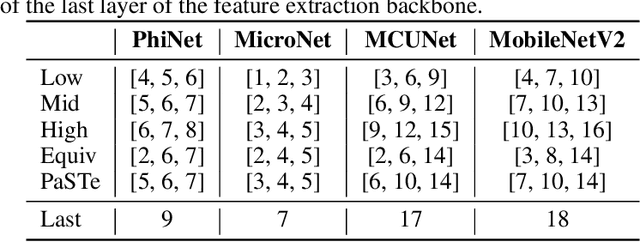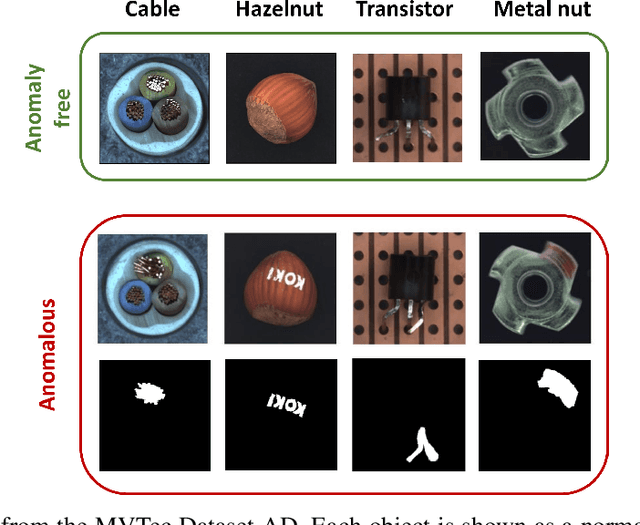Manuel Barusco
Domain Adaptation for Image Classification of Defects in Semiconductor Manufacturing
Jun 18, 2025Abstract:In the semiconductor sector, due to high demand but also strong and increasing competition, time to market and quality are key factors in securing significant market share in various application areas. Thanks to the success of deep learning methods in recent years in the computer vision domain, Industry 4.0 and 5.0 applications, such as defect classification, have achieved remarkable success. In particular, Domain Adaptation (DA) has proven highly effective since it focuses on using the knowledge learned on a (source) domain to adapt and perform effectively on a different but related (target) domain. By improving robustness and scalability, DA minimizes the need for extensive manual re-labeling or re-training of models. This not only reduces computational and resource costs but also allows human experts to focus on high-value tasks. Therefore, we tested the efficacy of DA techniques in semi-supervised and unsupervised settings within the context of the semiconductor field. Moreover, we propose the DBACS approach, a CycleGAN-inspired model enhanced with additional loss terms to improve performance. All the approaches are studied and validated on real-world Electron Microscope images considering the unsupervised and semi-supervised settings, proving the usefulness of our method in advancing DA techniques for the semiconductor field.
Towards Scalable IoT Deployment for Visual Anomaly Detection via Efficient Compression
May 15, 2025Abstract:Visual Anomaly Detection (VAD) is a key task in industrial settings, where minimizing operational costs is essential. Deploying deep learning models within Internet of Things (IoT) environments introduces specific challenges due to limited computational power and bandwidth of edge devices. This study investigates how to perform VAD effectively under such constraints by leveraging compact, efficient processing strategies. We evaluate several data compression techniques, examining the tradeoff between system latency and detection accuracy. Experiments on the MVTec AD benchmark demonstrate that significant compression can be achieved with minimal loss in anomaly detection performance compared to uncompressed data. Current results show up to 80% reduction in end-to-end inference time, including edge processing, transmission, and server computation.
Evaluating Modern Visual Anomaly Detection Approaches in Semiconductor Manufacturing: A Comparative Study
May 12, 2025Abstract:Semiconductor manufacturing is a complex, multistage process. Automated visual inspection of Scanning Electron Microscope (SEM) images is indispensable for minimizing equipment downtime and containing costs. Most previous research considers supervised approaches, assuming a sufficient number of anomalously labeled samples. On the contrary, Visual Anomaly Detection (VAD), an emerging research domain, focuses on unsupervised learning, avoiding the costly defect collection phase while providing explanations of the predictions. We introduce a benchmark for VAD in the semiconductor domain by leveraging the MIIC dataset. Our results demonstrate the efficacy of modern VAD approaches in this field.
Memory Efficient Continual Learning for Edge-Based Visual Anomaly Detection
Mar 04, 2025Abstract:Visual Anomaly Detection (VAD) is a critical task in computer vision with numerous real-world applications. However, deploying these models on edge devices presents significant challenges, such as constrained computational and memory resources. Additionally, dynamic data distributions in real-world settings necessitate continuous model adaptation, further complicating deployment under limited resources. To address these challenges, we present a novel investigation into the problem of Continual Learning for Visual Anomaly Detection (CLAD) on edge devices. We evaluate the STFPM approach, given its low memory footprint on edge devices, which demonstrates good performance when combined with the Replay approach. Furthermore, we propose to study the behavior of a recently proposed approach, PaSTe, specifically designed for the edge but not yet explored in the Continual Learning context. Our results show that PaSTe is not only a lighter version of STPFM, but it also achieves superior anomaly detection performance, improving the f1 pixel performance by 10% with the Replay technique. In particular, the structure of PaSTe allows us to test it using a series of Compressed Replay techniques, reducing memory overhead by a maximum of 91.5% compared to the traditional Replay for STFPM. Our study proves the feasibility of deploying VAD models that adapt and learn incrementally on CLAD scenarios on resource-constrained edge devices.
From Vision to Sound: Advancing Audio Anomaly Detection with Vision-Based Algorithms
Feb 25, 2025Abstract:Recent advances in Visual Anomaly Detection (VAD) have introduced sophisticated algorithms leveraging embeddings generated by pre-trained feature extractors. Inspired by these developments, we investigate the adaptation of such algorithms to the audio domain to address the problem of Audio Anomaly Detection (AAD). Unlike most existing AAD methods, which primarily classify anomalous samples, our approach introduces fine-grained temporal-frequency localization of anomalies within the spectrogram, significantly improving explainability. This capability enables a more precise understanding of where and when anomalies occur, making the results more actionable for end users. We evaluate our approach on industrial and environmental benchmarks, demonstrating the effectiveness of VAD techniques in detecting anomalies in audio signals. Moreover, they improve explainability by enabling localized anomaly identification, making audio anomaly detection systems more interpretable and practical.
PaSTe: Improving the Efficiency of Visual Anomaly Detection at the Edge
Oct 15, 2024



Abstract:Visual Anomaly Detection (VAD) has gained significant research attention for its ability to identify anomalous images and pinpoint the specific areas responsible for the anomaly. A key advantage of VAD is its unsupervised nature, which eliminates the need for costly and time-consuming labeled data collection. However, despite its potential for real-world applications, the literature has given limited focus to resource-efficient VAD, particularly for deployment on edge devices. This work addresses this gap by leveraging lightweight neural networks to reduce memory and computation requirements, enabling VAD deployment on resource-constrained edge devices. We benchmark the major VAD algorithms within this framework and demonstrate the feasibility of edge-based VAD using the well-known MVTec dataset. Furthermore, we introduce a novel algorithm, Partially Shared Teacher-student (PaSTe), designed to address the high resource demands of the existing Student Teacher Feature Pyramid Matching (STFPM) approach. Our results show that PaSTe decreases the inference time by 25%, while reducing the training time by 33% and peak RAM usage during training by 76%. These improvements make the VAD process significantly more efficient, laying a solid foundation for real-world deployment on edge devices.
Unveiling the Anomalies in an Ever-Changing World: A Benchmark for Pixel-Level Anomaly Detection in Continual Learning
Mar 19, 2024Abstract:Anomaly Detection is a relevant problem in numerous real-world applications, especially when dealing with images. However, little attention has been paid to the issue of changes over time in the input data distribution, which may cause a significant decrease in performance. In this study, we investigate the problem of Pixel-Level Anomaly Detection in the Continual Learning setting, where new data arrives over time and the goal is to perform well on new and old data. We implement several state-of-the-art techniques to solve the Anomaly Detection problem in the classic setting and adapt them to work in the Continual Learning setting. To validate the approaches, we use a real-world dataset of images with pixel-based anomalies to provide a reliable benchmark and serve as a foundation for further advancements in the field. We provide a comprehensive analysis, discussing which Anomaly Detection methods and which families of approaches seem more suitable for the Continual Learning setting.
 Add to Chrome
Add to Chrome Add to Firefox
Add to Firefox Add to Edge
Add to Edge